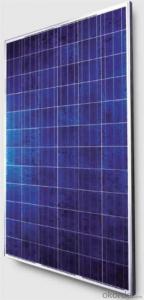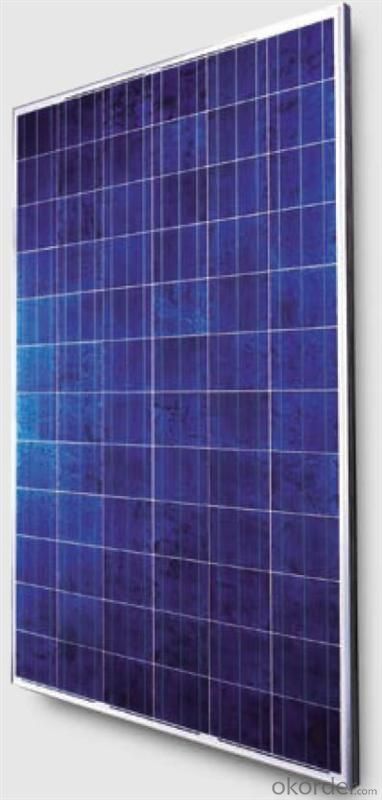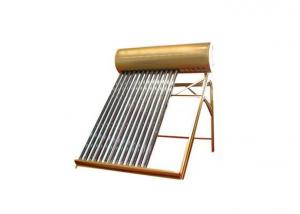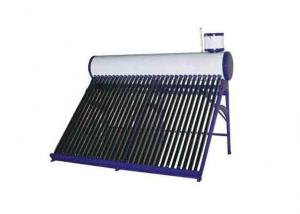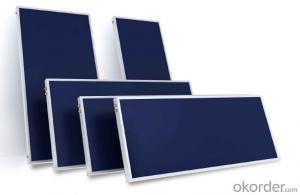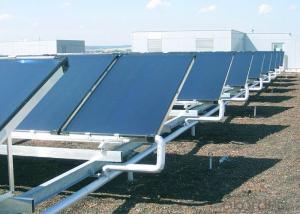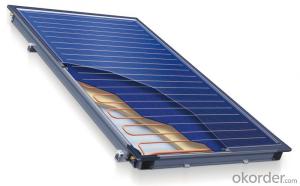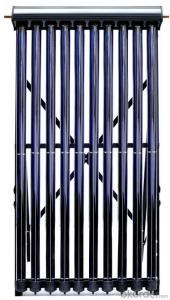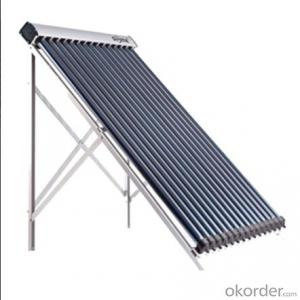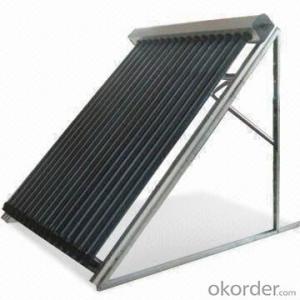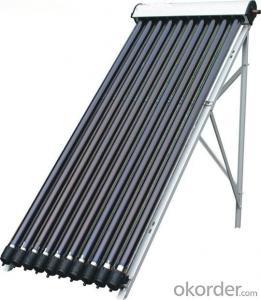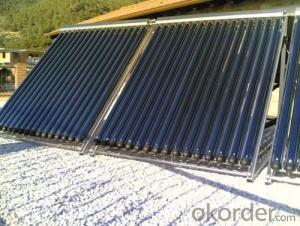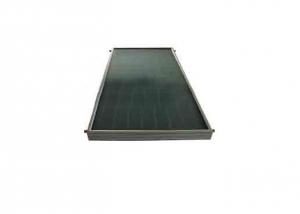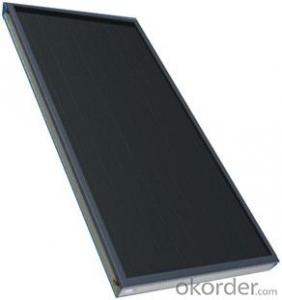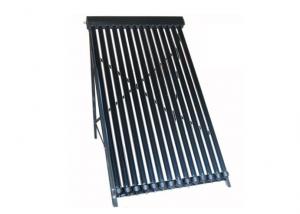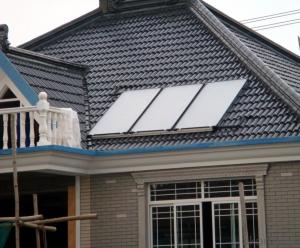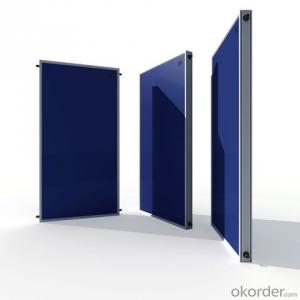Thermomax Evacuated Tube Solar Collectors Integrated with Solar Photovoltaic Polycrystalline Modules
- Loading Port:
- Tianjin
- Payment Terms:
- TT OR LC
- Min Order Qty:
- 1 pallet
- Supply Capability:
- 100000000 pallet/month
OKorder Service Pledge
OKorder Financial Service
You Might Also Like

Solar panel refers either to a photovoltaic (PV) module, a solar hot water panel, or to a set of solar photovoltaic modules electrically connected and mounted on a supporting structure. A PV module is a packaged, connected assembly of solar cells. Solar panels can be used as a component of a larger photovoltaic system to generate and supply electricity in commercial and residential applications. Each module is rated by its DC output power under standard test conditions, and typically ranges from 100 to 320 watts. The efficiency of a module determines the area of a module given the same rated output – an 8% efficient 230 watt module will have twice the area of a 16% efficient 230 watt module. There are a few solar panels available that are exceeding 19% efficiency. A single solar module can produce only a limited amount of power; most installations contain multiple modules. A photovoltaic system typically includes a panel or an array of solar modules, an inverter, and sometimes a battery and/or solar tracker and interconnection wiring.
Specifications:
solar panels from 5W--300W, made of TAIWAN MOTECH brand cells,with CO in TAIWAN,Mono and Poly with VDE,IEC,CSA,UL,CE,ISO.
We import solar cells from Taiwan Motech brand, with this CO in taiwan and our CSA certification,we can still sell goods to Anti-dumping areas like USA. Our main products are solar panels, off grid and on grid solar home systems , solar street lighting systems, solar water heating system,solar pump,solar attic fan, solar DC LED lights and solar DC refrigerators.
Certificates : ISO, CE, VDE IEC, MCS, CSA-UL, CEC.
Delivery time: sample 10days, order 25-30days.
Sample: charged.
Payment term: T/T 30% as deposit, 70% before shipment. Or irrevocable L/C at sight.
Trade term: FOB Shenzhen or CIF destination seaport or Airport.
Characteristics:
I.Solar Cell : High efficiency crystalline solar cell. Even if under the weak light, the solar module can produce maximum power output.
II.Tempered glass (toughened glass): Anti-reflecting coating and high transmission rate glass increase the power output and mechanical strength of solar module.
III.EVA and TPT: Using high quality EVA and TPT to prevent destroying and water.
IV.AI frame: Without screw, corner connection. 6 holes on the frame can be installed easily.
V.Junction box: Multi function junction box with water proof.
VI.Long lifetime: ≥25 years; Less power decrease.
VII.Good performance of preventing from atrocious weather such as wind and hails.
VIII.Resisting moisture and etching effectively, not effected by geology.
IX.The certificate issued by international authority: UL, TUV, IEC, VDE, CE.
Quality and Safety
1. Rigorous quality control meets the highest international standards.
2. High-transmissivity low-iron tempered glass, strong aluminium frame.
3. Using UV-resistant silicon.
4. IS09001/14001/CE/TUV/UL
Warranties
1. 10 years limited product warranty
2. 15 years at 90% of the minimal rated power output
3. 25 years at 80% of the minimal rated power output
Technical date :
ITEM NO.: | Poly 156*156 cell ,60pcs . Power range from 230Wp-260Wp | ||||||
Maximum Power(W) | 230 | 235 | 240 | 245 | 250 | 255 | 260 |
Optimum Power Voltage(Vmp) | 29.4 | 29.5 | 29.7 | 30.1 | 30.3 | 30.5 | 30.7 |
Optimum Operatige Current(Imp) | 7.83 | 7.97 | 8.08 | 8.14 | 8.25 | 8.37 | 8.48 |
Open Circuit Voltage(Voc) | 36.7 | 36.8 | 36.9 | 37.1 | 37.3 | 37.5 | 37.7 |
Short Circuit Current(Isc) | 8.52 | 8.59 | 8.62 | 8.65 | 8.69 | 8.73 | 8.78 |
Solar Cell: | 156*156 Poly | ||||||
Number of Cell(pcs) | 6*10 | ||||||
Name of Solar Cells | Polycrystalline Cell | ||||||
Size of Module(mm) | 1650*992*40/45/50 | ||||||
Cable & Connector Type | Pass the TUV Certificate | ||||||
Frame(Material Corners,etc.) | Aluminium-alloy | ||||||
Back sheet | TPT | ||||||
Weight Per Piece(KG) | 19.5KG | ||||||
FF (%) | 70-76% | ||||||
Junction Box Type | Pass the TUV Certificate | ||||||
Tolerance Wattage(e.g.+/-5%) | ±3%, or 0-3% | ||||||
Front Glass Thickness(mm) | 3.2 | ||||||
Temperature Coefficients of Isc(%) | +0.04 | ||||||
Temperature Coefficients of Voc(%) | -0.38 | ||||||
Temperature Coefficients of Pm(%) | -0.47 | ||||||
Temperature Coefficients of Im(%) | +0.04 | ||||||
Temperature Coefficients of Vm(%) | -0.38 | ||||||
Temperature Range | -40°C to +85°C | ||||||
Surface Maximum Load Capacity | 5400Pa | ||||||
Allowable Hail Load | 23m/s ,7.53g | ||||||
Bypass Diode Rating(A) | 12 | ||||||
Warranty | 90% of 10 years, 80% of 25 years. | ||||||
Standard Test Conditions | AM1.5 1000W/ 25 +/-2°C | ||||||
Packing | carton or pallet | ||||||
1*20' | 14 Pallets / 316pcs | ||||||
1*40'STD | 25 Pallets / 700pcs | ||||||
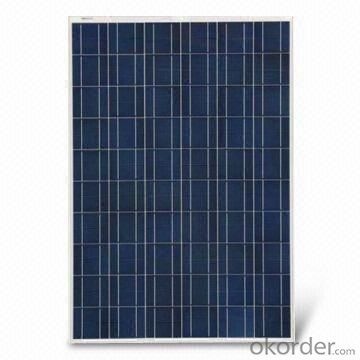
FAQ:
We have organized several common questions for our clients,may help you sincerely:
1. What’s price per watt?
A: It’s depends on the quantity, delivery date and payment terms of the order. We can talk further about the detail price issue. Our products is high quality with lower price level.
2. Can you tell me the parameter of your solar panels?
We have different series of cells with different power output, both from c-si to a-si. Please take our specification sheet for your reference.
3. How do you pack your products?
We have rich experience on how to pack the panels to make sure the safety on shipment when it arrives at the destination.
4. Can you do OEM for us?
Yes, we can.
5. How long can we receive the product after purchase?
In the purchase of product within three working days, We will arrange the factory delivery as soon as possible. The perfect time of receiving is related to the state and position of customers. Commonly 7 to 10 working days can be served.
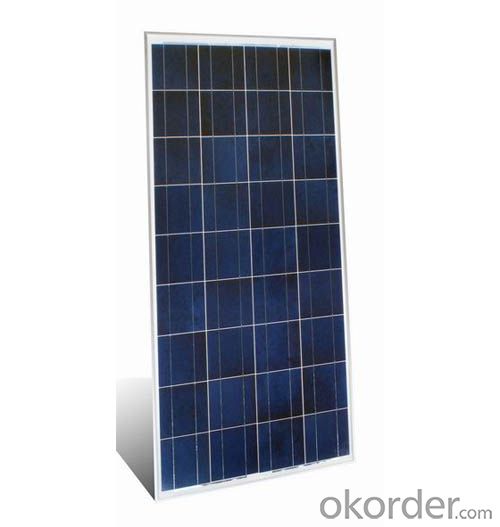
- Q: Can solar collectors be used in amusement parks?
- Yes, solar collectors can be used in amusement parks. They can be installed to generate clean and renewable energy to power various attractions, rides, and facilities in the park. Solar collectors can help reduce reliance on traditional energy sources and contribute to a more sustainable and eco-friendly operation of amusement parks.
- Q: Can solar collectors be used for heating greenhouses in winter?
- Yes, solar collectors can be used for heating greenhouses in winter. Solar collectors, such as solar water heating systems or solar air heaters, can capture and convert sunlight into heat energy. This heat energy can then be used to warm the greenhouse during colder months, helping to maintain a suitable temperature for plant growth.
- Q: Can solar collectors be used for heating hotels?
- Yes, solar collectors can be used for heating hotels. Solar thermal systems can be implemented to capture and convert sunlight into heat energy, which can then be used for water heating systems, space heating, or even for heating swimming pools in hotels. This renewable energy source can help hotels reduce their reliance on fossil fuels, lower energy costs, and decrease their carbon footprint.
- Q: Do solar collectors require direct sunlight to function?
- No, solar collectors do not necessarily require direct sunlight to function. While direct sunlight is ideal for maximum efficiency, solar collectors can still generate electricity or heat water even on cloudy or overcast days. This is because solar collectors work by harnessing the energy from sunlight, which is composed of photons. These photons can still penetrate through clouds and reach the solar panels, allowing them to convert the sunlight into usable energy. However, it is important to note that the energy output will be lower on cloudy days compared to sunny days with direct sunlight.
- Q: What is the working principle of flat solar collectors?
- At the same time, due to the temperature of the heat absorber, through the transparent cover and the shell to the environment heat loss, constitute a flat solar collector heat loss.
- Q: Can solar collectors be used in off-grid locations?
- Yes, solar collectors can definitely be used in off-grid locations. In fact, off-grid locations are often ideal for the installation of solar collectors due to the lack of access to traditional sources of electricity. Solar collectors can provide a reliable and sustainable source of energy in these remote areas, helping to power homes, businesses, and other facilities without the need for a connection to the main power grid.
- Q: Can solar collectors be used for heating industrial wastewater?
- Yes, solar collectors can be used for heating industrial wastewater. Solar thermal systems, such as solar water heaters or solar thermal panels, can be employed to heat water or wastewater using the energy from the sun. By utilizing solar collectors, industrial facilities can reduce their reliance on fossil fuels and lower their energy costs while also effectively heating their wastewater for various industrial processes.
- Q: Are there any health risks associated with solar collectors?
- Yes, there are no direct health risks associated with solar collectors. However, there may be potential indirect hazards during the manufacturing and installation processes, such as exposure to chemicals or falls from heights. Proper safety protocols must be followed to minimize these risks.
- Q: What materials are solar collectors made of?
- Solar collectors are typically made of materials such as glass, metal, and plastic.
- Q: Can solar collectors be used for generating electricity on lakes?
- Yes, solar collectors can be used for generating electricity on lakes. Floating solar panels, also known as floating photovoltaic (FPV) systems, are designed to be installed on bodies of water such as lakes. These systems consist of solar panels that are placed on floating structures, often made of buoyant materials like plastic or aluminum. There are several advantages to using solar collectors on lakes. Firstly, lakes often have large surface areas that receive ample sunlight, making them ideal locations for solar power generation. Additionally, floating solar panels can help to minimize land usage and maximize energy production by utilizing the available water surface. Furthermore, the natural cooling effect of water can enhance the efficiency of solar panels, as they perform better at lower temperatures. Water also acts as a natural cleaning agent, reducing the need for maintenance and ensuring optimal performance. Additionally, floating solar panels can help reduce water evaporation from lakes, which is particularly beneficial in arid regions. However, it is important to consider the specific conditions of the lake before installing solar collectors. Factors such as water depth, water quality, and environmental impact assessments need to be taken into account. Adequate anchoring systems must also be used to ensure the stability of the floating structures in varying weather conditions. Overall, solar collectors can be effectively used for generating electricity on lakes, providing a sustainable and renewable energy solution with multiple benefits.
Send your message to us
Thermomax Evacuated Tube Solar Collectors Integrated with Solar Photovoltaic Polycrystalline Modules
- Loading Port:
- Tianjin
- Payment Terms:
- TT OR LC
- Min Order Qty:
- 1 pallet
- Supply Capability:
- 100000000 pallet/month
OKorder Service Pledge
OKorder Financial Service
Similar products
Hot products
Hot Searches
Related keywords
